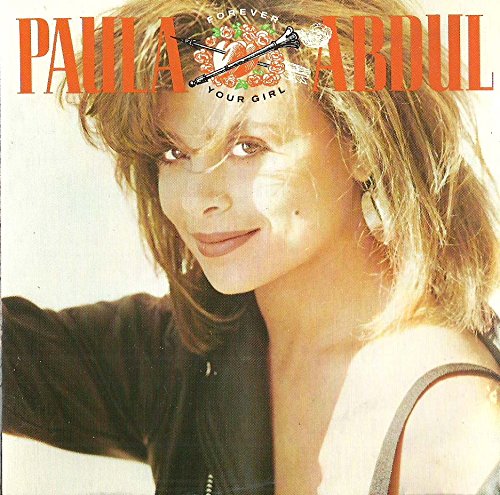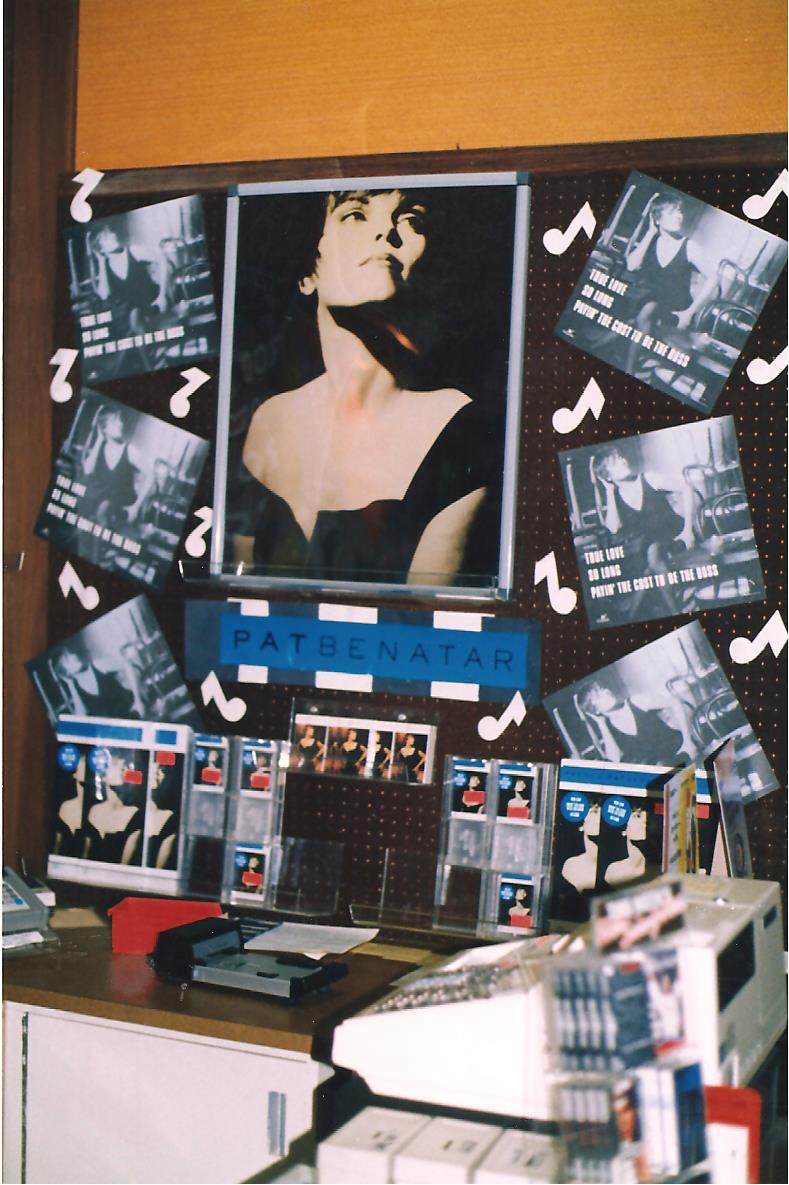Key Takeaway
Pop, rock, and dance collided this week in 1989—an electric moment where Janet Jackson and Paula Abdul’s choreography-driven sound reshaped radio, while veterans like the Rolling Stones and Aerosmith proved that classic rock could still rule alongside new pop icons.
The result? A Billboard Top Ten that perfectly captured the bridge between the 1980s and the MTV-fueled 1990s.
A Snapshot in Time
Before we cue up the cassettes, here’s what was happening in the world the week of October 28, 1989:
Janet Jackson’s Rhythm Nation 1814 hit No. 1 on the Billboard 200, beginning its four-week reign.
East Germany was on the brink of transformation—mass demonstrations in Leipzig and Dresden foreshadowed the fall of the Berlin Wall just weeks later.
In the U.S., President George H. W. Bush was navigating post–Cold War diplomacy, while debates over trade and crime dominated headlines.
The San Francisco Bay Area was still reeling from the Loma Prieta earthquake (October 17), which disrupted the World Series between the Giants and the Athletics.
At the movies, “Look Who’s Talking” topped the box office, and MTV was in its prime—music videos were now essential to an artist’s identity.
Just as the world was poised for change, the Billboard chart reflected that same energy—a mix of veteran legends, pop newcomers, and genre-crossing innovators.
This Week’s Top Ten Albums in America
Here’s what America was spinning on turntables and Walkmans during the last week of October 1989, along with the songs that drove each album’s success:
Janet Jackson’s Rhythm Nation 1814 – “Miss You Much” and “Rhythm Nation” defined dance-pop precision and social consciousness.
Girl, You Know It’s True – Milli Vanilli – Fueled by “Blame It on the Rain” and “Girl You Know It’s True,” this album was a chart juggernaut before controversy struck.
Dr. Feelgood – Mötley Crüe – Hard rock roared back with “Kickstart My Heart” and “Dr. Feelgood.”
Steel Wheels – The Rolling Stones – A triumphant comeback for the Stones, led by “Mixed Emotions” and “Rock and a Hard Place.”
Forever Your Girl – Paula Abdul – Pop perfection with “Straight Up” and “Cold Hearted.” Its long climb to No. 1 made history.
Pump – Aerosmith – The Boston rockers reinvented themselves with “Love in an Elevator” and “Janie’s Got a Gun.”
Hangin’ Tough – New Kids On The Block – Teen pop took over the airwaves with “I’ll Be Loving You (Forever)” and “Hangin’ Tough.”
The Seeds of Love – Tears for Fears – Expansive, artful pop led by “Sowing the Seeds of Love” and “Woman in Chains.”
Full Moon Fever – Tom Petty – A solo triumph packed with radio staples “Free Fallin’” and “I Won’t Back Down.”
Skid Row – Skid Row – The debut that made hair metal anthemic with “18 and Life” and “I Remember You.”
Album of the Week Spotlight
Forever Your Girl- Paula Abdul

Paula Abdul- Forever Your Girl
💿 Album of the Week Spotlight
Forever Your Girl – Paula Abdul
Why I Picked It:
Forever Your Girl was a slow-burning success story that became one of the defining pop albums of the late 1980s.
It wasn’t just the catchy songs—it was the choreography, visuals, and total performance package.
Paula Abdul bridged the gap between dance and pop, proving that MTV-driven visuals could drive album sales as powerfully as radio.
Release Story & Chart Climb:
Released in June 1988, Forever Your Girl took over a year to reach No. 1—an unprecedented 64-week climb.
Once there, it dominated, producing four No. 1 singles and establishing Abdul as a multi-platform performer: singer, dancer, and video star.
Her background as a choreographer for Janet Jackson’s Control and Rhythm Nation gave her an insider’s grasp on visual storytelling, a skill that reshaped pop promotion in the years that followed.
Why It Mattered:
The album’s success inspired a new wave of female pop stars and laid the groundwork for the dance-pop explosion of the early 1990s.
It showed that performance could be just as vital as production—and it helped solidify MTV as the center of pop culture.
Forever Your Girl on 1989 and beyond is seen in its influence on other artists, its innovative music videos, and its contribution to the rise of the late 80s and early 90s dance-pop genre.
While not a direct stylistic influence on boy bands, her crossover success as a dancer-turned-vocalist helped shape the aesthetic and market for choreographed pop acts that would become a defining feature of the 90s.
Choreography and aesthetic influence, Some Tidbits of Information, showing Paula's influence:
Janet Jackson: Before her solo debut, Abdul was a highly successful choreographer for major acts, most notably for Janet Jackson's groundbreaking videos from the Control (1986) album.
The high-energy, technically precise choreography that defined Jackson's videos was a direct precursor to Abdul's own success.
Boy bands: Following Abdul's success, 90s boy bands like the Backstreet Boys, *NSYNC, and others frequently employed complex, full-production choreography in their music videos and live performances.
This visual emphasis, championed by Abdul and Janet Jackson, became a staple of the boy band era.
My Connection
In late 1989, I was managing Camelot Music at West Manchester Mall in York, Pennsylvania.
You could literally see Forever Your Girl climb week by week—the demand never stopped.
Customers would come in asking for “the one with Straight Up” or “the cassette with that dance girl.”
It wasn’t just a Paula Abdul moment—it was an era of transformation in how people connected with music.
Artists like Janet Jackson, Paula Abdul, and Madonna brought movement, visuals, and choreography to the forefront.
At the same time, rock acts like Aerosmith and Tom Petty were proving that reinvention could keep a legacy alive.
By 1989, the future of pop was on full display—diverse, visual, and driven by energy and storytelling.

Camelot West Manchester Mall
Reflections & Insights
This week’s chart perfectly captures the transition from the guitar-driven ’80s to the image-driven ’90s.
Dance-pop, choreography, and crossover appeal were taking over.
Janet Jackson and Paula Abdul set the new standard: precision visuals, tight beats, and social or emotional resonance.
Meanwhile, classic rock acts weren’t fading—they were adapting.
Steel Wheels and Pump showed that seasoned bands could compete in a pop landscape dominated by image and production.
Together, these albums tell the story of 1989: an era where music wasn’t just heard—it was seen.
🧠 Trivia Corner
Fun Fact 1: Forever Your Girl took 64 weeks to reach No. 1—still one of the slowest climbs to the top in Billboard history.
Fun Fact 2: Rhythm Nation 1814 remains the only album to produce seven top-five singles on the Billboard Hot 100.
Fun Fact 3: Full Moon Fever was Tom Petty’s first solo album and his best-selling release, despite not carrying the “Heartbreakers” name.
❓ Frequently Asked Questions (FAQ)
Q: Which album was No. 1 this week in 1989?
A: Rhythm Nation 1814 by Janet Jackson held the top spot on the Billboard 200 for October 28, 1989.
Q: Why was Paula Abdul’s Forever Your Girl so successful?
A: Its combination of catchy songwriting, stunning choreography, and nonstop MTV presence made it a slow-building but unstoppable pop hit.
Q: What genres dominated late 1989?
A: Dance-pop, glam metal, and classic rock were all strong. This was a rare era when Janet Jackson, Aerosmith, and Tom Petty could share the Top Ten.
Q: How did music videos influence album sales during this time?
A: Videos were crucial—MTV exposure could turn a single into a national obsession and push album sales through the roof.
Join The Conversation
What were you listening to this week in history? Did you buy one of these albums when it was new?
Share your memories below, or join the discussion on our Music in the 1970s Facebook page to keep the needle spinning.
Follow Music In The 1970s
Love classic rock, soul, and everything 70s?
Join us for daily album insights, rare stories, and lively discussions.
Keep the golden era of music alive with fellow fans!
Visit Music In The 1970s
Leave a Reply